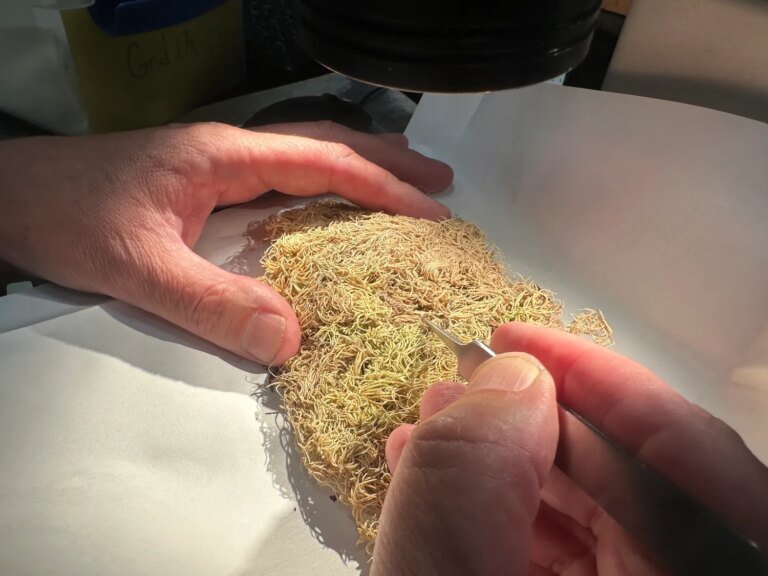Moss is one of the world’s oldest and most basic plants. Part of the bryophyte family, the estimated 12,000 known moss species have evolved over millions of years to flourish without seeds, leaves, stems, or even roots. This allows the sturdy plants to absorb all their water and nutrients from the environment around them. Many more complex plants wither and die in shady or oversaturated soil, but not moss. It thrives in these less hospitable soils and because of their tenacity, the greens could function as valuable crime scene “witnesses.”
Botanist Matt von Konrat at Chicago’s Field Museum believes bryophytes’ tenacity can make them valuable witnesses at the scene of a crime. But according to his team’s findings published in the journal Forensic Sciences Research, detectives are overlooking the potential plant tools.
“I thought, why don’t we look into writing a review of how bryophytes have been used in forensics? So we reviewed 150 years of scientific literature to see how these plants have been used in investigations,” von Konrat said in a statement. “Well, it turns out, the answer was, ‘Not that much.’”

Across a century-and-a-half of scientific literature, the study’s authors identified only 11 confirmed instances of moss samples helping to explain unsolved deaths. The earliest case dates back to 1929, when moss growth rates on a decomposing skeleton allowed investigators in Australia to determine the body’s age. The most recent confirmed example occurred in 2015, when experts utilized bryophyte specimens to help reconstruct the scene surrounding an individual who died by suicide.
“Because they’re so small, they have all sorts of microhabitats—even if an area overall seems to be one sort of habitat, they can find a spot that works for them in the shade, or in the canopy, or even growing under the grasses,” von Konrat explained, adding that further clues may be gleaned from the even smaller organisms often living on the mosses themselves. “This means that mosses can be a valuable tool for forensic scientists looking to confirm details of where a crime took place.”
Von Konrat cited one particular case as an example. After confessing to killing his daughter in 2011, a father pointed law enforcement towards a vague region in northern Michigan to locate the body. After analyzing microscopic plant remnants collected from the father’s shoes, von Konrat organized a team of botanists and search volunteers to help find the girl’s remains.
“There are hundreds of species of moss and dozens of species of grasses and trees living in that area,” said von Konrat. “But based on the bits of moss, we knew what sort of micro-habitat we were looking for.”
Investigators eventually shrank the body’s probable location from seven counties down to only about 50 square feet of search area. After showing the spot to the father, he confirmed that it was his daughter’s burial site.
With the first scientific review of its kind now published, von Konrat hopes more forensic pathologists and law enforcement officials will add bryophytes to their list of potentially telltale sources of evidence.
“Plants, and specifically bryophytes, represent an overlooked yet powerful source of forensic evidence that can help investigators link people, places, and events,” he said.



